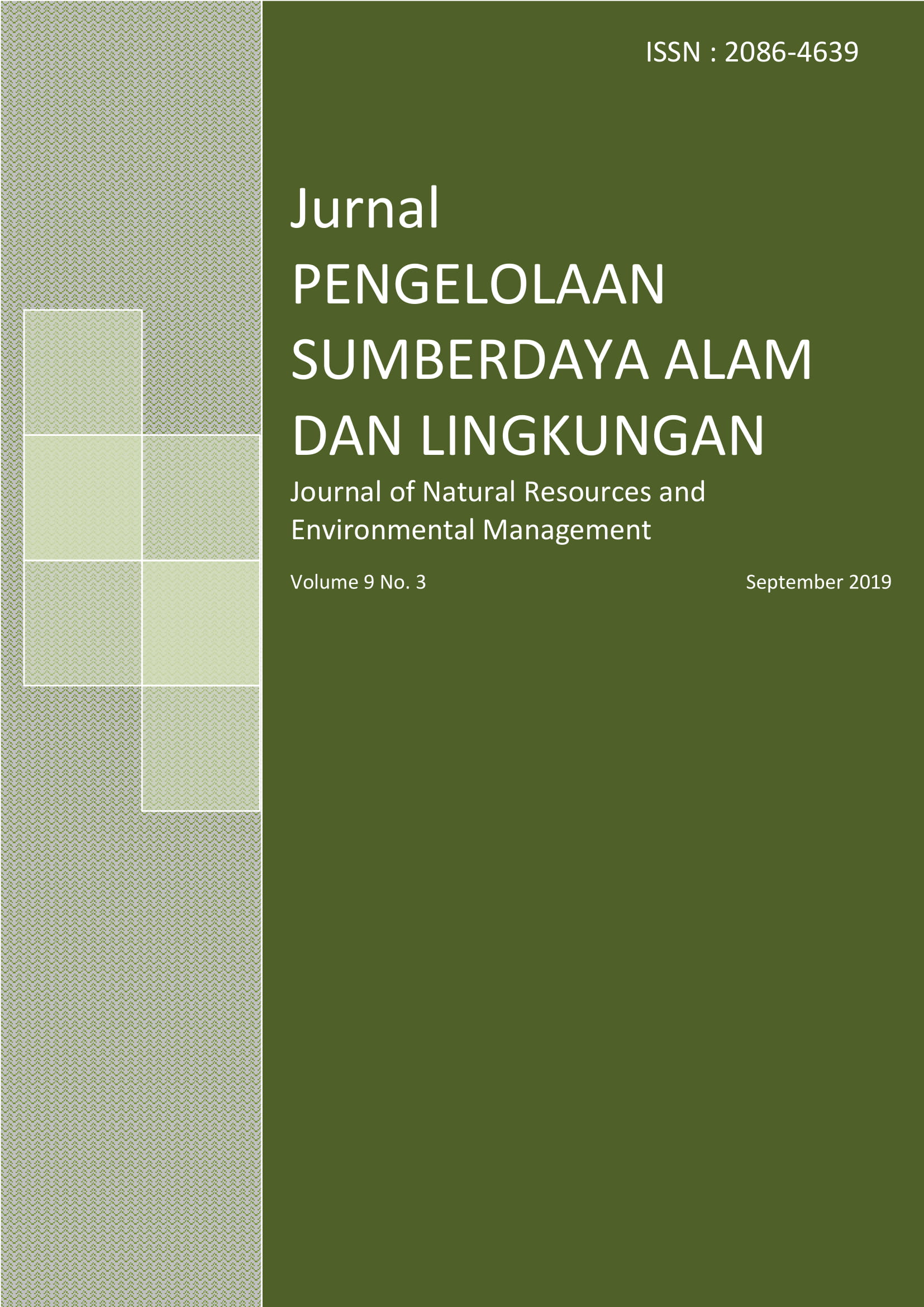Model kebijakan strategis pengelolaan lingkungan kawasan industri (Studi Kasus Kawasan Industri Jababeka dan EJIP di Kabupaten Bekasi)
Abstract
References
‘Arcy B, Kim LH, Redillas MM Ed. 2018. Wealth Creation without Pollution: Designing for Industri, Eco Business Park and Industrial Estates. London: IWA Publising.
Budiyanto P, Saefuddin A, Putri EIK. 2015. Analisis keberlanjutan PT East Jakarta Industrial Park dalam mewujudkan kawasan industri yang berwawasan lingkungan. Jurnal Pengeloaan Sumberdaya alam dan Lingkungan. 5(2):199-209.
Cahyanto AD, Noorachmat BP, Noor E. 2016. Model pengembangan kebijakan integrasi sistem manajemen mutu dan lingkungan. Jurnal Pengeloaan Sumberdaya alam dan Lingkungan. 6(1):31-44.
Fonseca F, Ramos RAR, Da Silva ANR. 2015. An agent-based model to assess the attractiveness of industrial estates. Journal of Artificial Societies and Social Simulation. 18 (4):13. doi: 10.18564/jasss.2893.
Hadiwijoyo R, Purwanto P, Hadi P. 2013. Innovative green technology for sustainable industrial estate development. International Journal of Renewebale Energy Development (IJRED). 2(1):53-58.
Marimin. 2013. Aplikasi Teknik Pengambilan Keputusan dalam Manajemen Rantai Pasok. Bogor: IPB Press.
Mohammed AS, Melkania U, Kumar BN. 2014. Sosio economic impact assessment of integrated Industrial Estate Pantnagar India. Ethiopian Journal of Environmental Studies & Management. 7:890-901. doi: http://dx.doi.org/10.4314/ejesm.v7i2.9S.
Riberio P, Fonseca F, Neiva C, Bardi T, Laurenco JM. 2017. An integrated approach towards transforming an industrial park into an eco-industrial park: the case of salaise-sablons. Journal of Environmental Planning and Management. 61(2):195-213.
Saaty TL. 2008. Decision making with the analytical hierarchy process. Int. J. Services Sciences. 1(1):83-98.
Sulaiman F, Saefudin A, Zain AFM. 2008. Strategi pengelolaan kawasan industri cilegon menuju eco industrial park. Journal of Regional and City Planning. 19(2):37-57.
Supono S. 2009. Model kebijakan pengembangan kawasan pantai utara jakarta secara berkelanjutan [disertasi]. Bogor (ID): Program Studi Pengelolaan Sumberdaya Alam dan Lingkungan. Sekolah Pascasarjana Institut Pertanian Bogor.
Wikaningrum T, Noorachmat BP, Noor E. 2015. Kebijakan Pengelolaan Lingkungan Kawasan Industri sesuai Proper KLHK Peringkat Hijau. Jurnal Pengeloaan Sumberdaya alam dan Lingkungan. 5(2):111-120.
Wikaningrum T. 2018. Prospek skenario kebijakan pengelolaan lingkungan kawasan industri (Studi Kasus Kawasan Industri Jababeka dan EJIP di Kabupaten Bekasi). Journal Environmental Engineering and Waste Treatment. 3(1):36-47.
Winardi, Priyarsono DS, Siregar H, Kustanto H. 2017. Impacts of industrial estate development policy on household poverty in West Java Province. International Journal of Sciences: Basic and Applied Research (IJSBAR). 31(3):308-317.
Authors
Authors who publish with this journal agree to the following terms:
- Authors retain copyright and grant the journal right of first publication with the work simultaneously licensed under a Creative Commons Attribution License that allows others to share the work with an acknowledgement of the work's authorship and initial publication in this journal.
- Authors are able to enter into separate, additional contractual arrangements for the non-exclusive distribution of the journal's published version of the work (e.g., post it to an institutional repository or publish it in a book), with an acknowledgement of its initial publication in this journal.
- Authors are permitted and encouraged to post their work online (e.g., in institutional repositories or on their website) prior to and during the submission process, as it can lead to productive exchanges, as well as earlier and greater citation of published work (See The Effect of Open Access).






